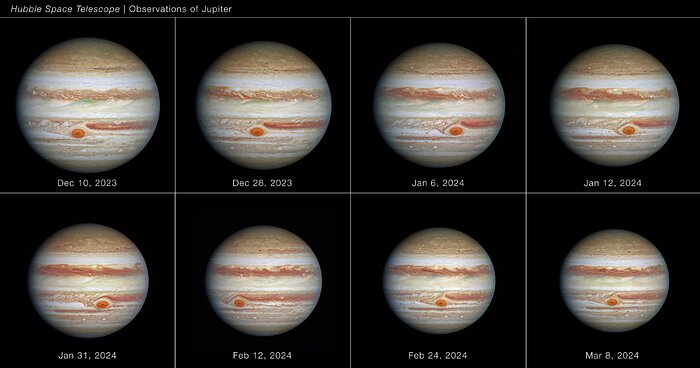Full disc of Jupiter (December 2023 to March 2024)
Using Hubble Space Telescope data spanning approximately 90 days (between December 2023 and March 2024) when the giant planet Jupiter was approximately 630 million to 820 million from the Sun, astronomers measured the Great Red Spot’s size, shape, brightness, colour, and vorticity over a full oscillation cycle. The data reveal that the Great Red Spot is not as stable as it might look. It was observed going through an oscillation in its elliptical shape, jiggling like a bowl of gelatin. The cause of the 90-day oscillation is unknown. The observation is part of the Outer Planet Atmospheres Legacy program (OPAL).
[Image description: Eight images of the giant planet Jupiter spanning approximately 90 days between December 2023 and March 2024. The planet appears striped, with brown and white horizontal bands of clouds. These stripes are called belts (sinking air) and bands (rising air). The polar regions appear more mottled.]
Credit:NASA, ESA, A. Simon (GSFC)
About the Image
| Id: | heic2412b |
|---|---|
| Type: | Collage |
| Release date: | 9 October 2024, 20:15 |
| Related releases: | heic2412 |
| Size: | 5712 x 3000 px |
About the Object
| Category: | Solar System |
|---|
